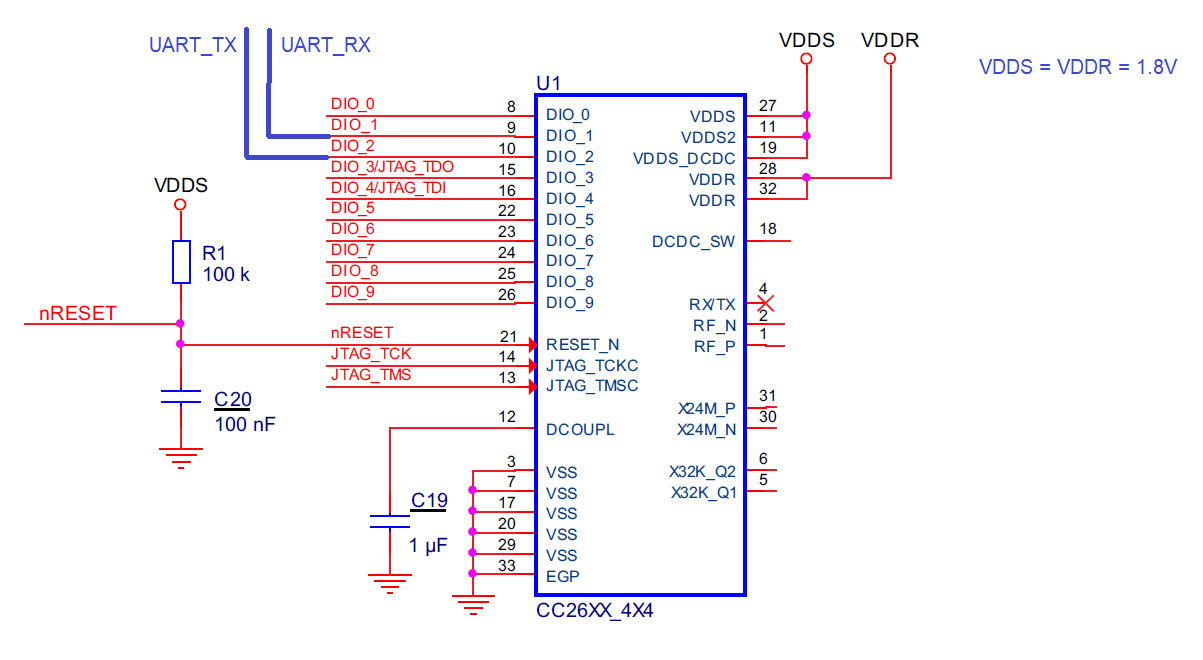Other Parts Discussed in Thread: CC2640,
Hi,
I plan to flash my own cc2640 MCU in-house. I have developed my application with a LaunchPad, but now I would like to flash a cc2640 MCU with the program I developed. I have a socket for the MCU that allows me to easily connect the necessary pins to my XDS110 debug probe. I would like to flash using UART, using the Serial Bootloader Library in Microsoft Visual C++.
What is the minimum layout for connections/components required to just FLASH the chip with my XDS110? Could I just connect the UART TX and RX , or do I have to connect a VDDS and GND as well, or do I have to implement the entire minimum component layout shown in the datasheet in order to be able to flash the chip?
Thanks!
Ali



